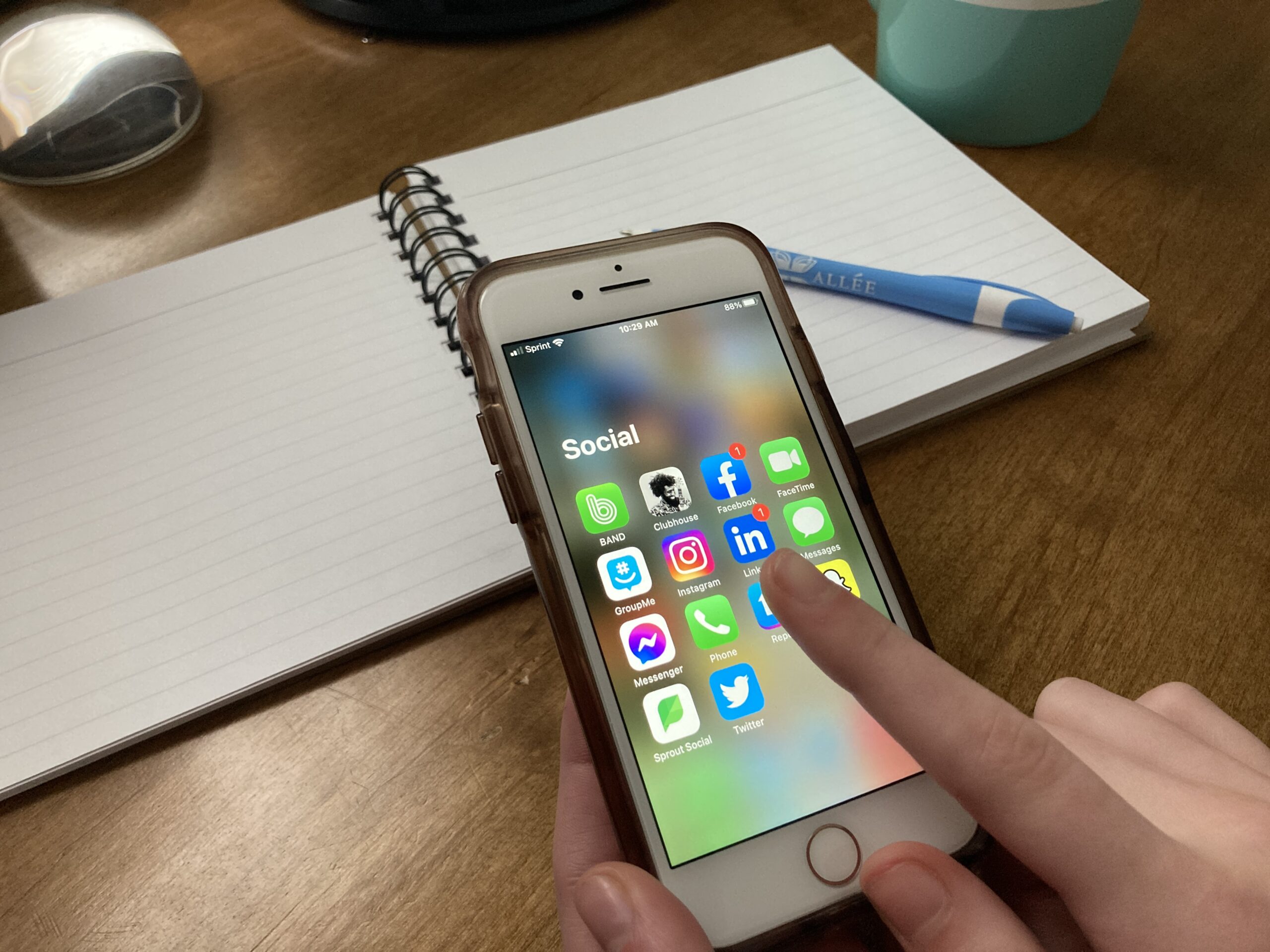Some of you may still be trying to figure out how to use LinkedIn and why you should spend time on yet another social media platform. Trust me, I get it. I was not the biggest LinkedIn fan even 5 years ago. Fast-forward to 2021 and I’ve seen the light.
Whether you’re interested in building your personal brand or connecting with recruiters, or you’re looking for ways to connect with clients, customers and prospects, I encourage you to take a moment to analyze your presence on LinkedIn–could you be doing a better job at building those connections and leads?
LinkedIn is a powerful social media tool. Getting a solid handle on both your professional LinkedIn profile and your company LinkedIn page can do wonders for your brand. Need proof?
- LinkedIn is the most trusted social network in the U.S. by 73% of social media users. In comparison, only 53% trust Facebook.
- Three people are hired through LinkedIn every minute.
- Content creation on LinkedIn increased 60% in 2020.
- LinkedIn is not just a recruitment platform; content impressions outpace job postings 15 to 1.
- The platform offers more than 200 characteristics to choose from when targeting your audience; Google has nothing on that.
- Ninety-six percent of B2B content marketers use LinkedIn for organic social marketing; if you are in the B2B space, LinkedIn is the option.
So, what should you do about it? For starters, get your LinkedIn profile in shape. If it’s been awhile, carve out time in the near future to update your settings, review your profile and make necessary changes. Yes, even if you have a solid job and don’t plan to go anywhere anytime soon. Remember, it’s not just about recruiting.
From there, move to your brand’s footprint on LinkedIn. Do you have a company page established? Are you participating in groups? Would it be beneficial to start a group as an asset to your brand?
Below, I’ve provided some initials steps for how to step up both your personal and company assets on LinkedIn.
Personal LinkedIn profile strategies
- Set the basics. Review your LinkedIn profile to make sure you have an updated profile picture, a solid headline and an about section that speaks to who you are and what you know. Think of your LinkedIn profile as your online resume; your digital sell sheet. When someone happens upon your LinkedIn profile, you want them to find updated information that positions you as someone they would like to meet. Spend time reviewing your LinkedIn profile and work through the suggested profile sections to showcase your work, articles, education, expertise and interest areas.
- Use the LinkedIn articles feature to publish content directly to the platform. Much like a blog, composing articles directly through LinkedIn articles provides you with a platform to showcase your expertise, provide education to others and show up in search. This feature on LinkedIn is also great if you do not have a company or personal blog but would like to share your thoughts on certain topics.
- Join groups based on your industry, interests or expertise. Some LinkedIn groups are amazing and some are pretty dry, so this one may take some digging. If you join some good ones, LinkedIn groups can provide new opportunities for connections and engagement with others in your industry. There’s good learning opportunities here and these groups can also provide a way for you to share your thoughts, opinions and every once in awhile, showcase your work. Be careful here; many groups have rules on promotional content and no one likes reading a sales pitch in every post.
- Use the ‘Add a Note’ feature when sending connection requests. Sure, you can request a connection from almost anyone on LinkedIn (with a few exceptions based on profile settings) but please do so with some context behind it. When you request to connect with someone, you will be given the option to ‘Add a Note’ to that connection. I highly recommend you use that feature along with the request. Let the person know if you met them before, if you have a mutual connection and/or why you are reaching out and how you found them. Doing so increases your chances of that connection being approved. Personally, if I do not know the person reaching out to me on LinkedIn and they have not provided context on how they found me or how we know one another, I do not accept the request.
- Engage. It’s not enough to ‘set it and forget it.’ Part of what makes social media so great is that you can share thoughts, give praise, join in on conversations and engage with others without needing to book 15 networking events a week. As you start, you may not have the time to engage and read through your newsfeed on a daily basis, but as you get more comfortable with the platform you can increase your time spent there. I like to check LinkedIn first thing in the morning and again before I leave the office for the day. I’ll leave comments on posts to congratulate people, comment on something I agree with (or disagree with) in an article they’ve shared, or give a general kudos to a shared post.
- Consider LinkedIn Premium or InMail. I list this recommendation as a nice-to-have, not a must-have. And if you are someone who is new to using LinkedIn or new to putting a lot of effort into it, my recommendation is to start small, build consistently from an organic standpoint and then think about the pay-to-play options. Do what feels good for your personal brand, too. If cold calling is not something you support, skip the paid features on LinkedIn. With careful planning and routine, you can be very effective on this channel without having to fork up the cash to do so.
LinkedIn company page strategies
- Update your page profile (or create your company page). Just as you would your personal LinkedIn profile, keep your company page profile updated to match your key talking points, mission, vision, etc. When someone visits your company page they should readily be able to see who you are, where you’re located, if you have employees connected online, the services/products you offer and how to get a hold of you outside of LinkedIn.
- Use keywords in your tagline and about section. Think about what your audience may search for, what you provide and for what you want to be found. Use those words (in conjunction with your brand voice and offerings) to create descriptive content about who you are and what you do.
- Establish a content distribution strategy and cadence. Multiple posts a day are not necessary on LinkedIn (and in fact, subsequent same-day posts will likely see a dip in engagement) but regular posts throughout the week are key. Content that is posted during the work week (and typically before 5pm) perform best on LinkedIn. Don’t worry about the weekends so much and strive for a cadence of between 3 and 5 posts per week. Hubspot offers good insight on social media post frequency best practices.
- Invest in visual content. Posts with images receive 2x the engagement than those without; LinkedIn users are 20x more likely to re-share a video post. Get creative and publish content that has visual appeal. Short video clips, visual checklists, behind-the-scenes viewpoints–grab attention with more than words alone.
- Fill your team in. Employees are 14x more likely to share content from your company page than other content on LinkedIn and it’s reported that 30% of page engagement comes from employees. Your team has some of your best brand ambassadors on it. Keep them in the loop, keep them involved and provide them the chance to share your content.
- Get your leaders involved. Your C-suite and company executives have a lot of leverage on LinkedIn. Develop a content creation and distribution plan across this channel that includes those personal profiles as well. Just as you would create a content calendar for the company page, plan for consistent content, feed posts, articles and updates from key leaders in your company. (Need ideas or help ghost writing? Let met know).
- Monitor and engage. Forget about push marketing. Nobody wants that. The best brands on LinkedIn are monitoring mentions, comments and shared content while reciprocating the engagement. Be prepared to respond to LinkedIn notifications (and check your settings to make sure they’re turned on).
Bonus: Keep your content ideas and distribution cadence organized with a solid content calendar (they’re not just for branded content). Content calendars are great resources for individual accounts and company pages on LinkedIn.
Engage individuals and companies with tags
No matter where you’re posting online, give credit where credit is due. LinkedIn, as with other social media platforms, has tagging capabilities when posting. Collaborating with an individual? Tag them in your post. See something another company is doing and want to share with others? Tag them in your post. Celebrating a birthday or anniversary milestone of a colleague or team member? Tag them in your post.
You get the idea.
Tagging (a simple use of ‘@’ followed by the persona’s name/LinkedIn profile name or company page name) provides the opportunity to bring others into the conversation, too. When someone is tagged in an update or post, they receive a notification and those who are connected to them also have the ability to see the tag. The same holds true for company page tags. It’s an easy way to expand reach and engage with others.
Additional LinkedIn support
LinkedIn offers a great “Read Me” series that provides insight into three key areas: growing your brand on LinkedIn, using LinkedIn to drive more leads and tips for advertising on LinkedIn. If you prefer visuals over text, you can get the same information on the platform’s “Watch Me” series as well. Think about what you want to achieve in the next year and how LinkedIn can play a role in supporting those goals.
Tell me how you’re doing. Reach out to me for a LinkedIn connection, let me know you read the post and let’s keep in touch. I’ve connected with some great people over the years on the platform and by implementing some of my ideas above, I know you will, too!





